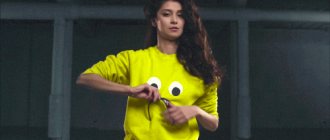The aroma of hot pies makes you instantly forget about your diet. A disapproving word from a critic kills the desire to create. An interesting series steals your sleep time at night. These are all triggers - external stimuli that cause changes in thoughts, often include patterns of behavior that we do not need, and widen the gap between the “ideal self” and the “real self.”
Marshall Goldsmith, author of Triggers, knows how to resist them and, moreover, how to use triggers to your advantage: change your behavior, feel less regret about mistakes, and achieve any goals. He tells you what to do if you want changes and good habits in your life to be more than fleeting.
Non-stop trigger
The environment is not an amorphous space touching our skin, but a non-stop trigger. Triggers appear unexpectedly. It could be a serving of ice cream at night or the pressure from others that confuses you and forces you to go against your will. They can be pleasantly exciting, like the prospect of a personal exhibition, or devastating, like news of a loved one’s illness.
External factors are beyond our control. Often it seems to us that we are not able to influence them, and we feel like puppets of fate. Don't accept it.
Fate is the cards we've been dealt. The choice is how to play them.
What behavior pattern are you changing?
How to change habits using the behavior pattern matrix? Imagine that you want to change some behavior of your client. First you need to understand what kind of behavior pattern you will have to deal with, and only then select the appropriate techniques and techniques.
So, let's look at each of the behavioral models in more detail.
Amateur
Nir Eyal calls lovers people whose actions are aimed at quickly obtaining pleasure at a relatively low cost of willpower. The habits of Amateurs almost completely repeat actions that are part of the daily routine of most of us: morning shower, breakfast, walk, checking mail, etc.
To change the habits of Amateurs, standard methods of influencing human behavior are suitable. We are talking about various kinds of external stimuli. This could be an alarm clock, an audible reminder, or even a specific object such as strategically placed dental floss. 
After a while, when a person develops a new habit, the need to use external triggers disappears.
It should be noted that the “Amateur” model is the starting point for the formation of the remaining types of behavior: An Amateur can easily turn into an Expert or a Regular, as well as into a Dependent (Addict).
For example, a person who has no experience working with a computer first learns the simplest algorithms and combinations (Amateur), and over time, putting more and more effort, improves his skills to the level of an Expert. But at the same time, a former Amateur may develop an unhealthy addiction to computer games, and he will very quickly turn into an Addict.
The Amateur Behavior Change Model includes the following methods:
- Baby steps method (small actions that help achieve your goals).
- Planning and control.
- Using external triggers.
Ineffective methods:
- The requirement to strictly follow instructions.
- Competition.
- Feelings of guilt and punishment.
- How to develop a new habit? 5 Step Strategy
Expert
The Expert behavior model requires a high degree of self-control from a person. All the Expert’s actions are brought to almost automaticity. This behavior model is characteristic of professional tennis players, chess players, computer engineers, highly qualified surgeons, musicians, etc.
Becoming an Expert requires hard, long-term practice. A person must train his body and mind to react with lightning speed to current events and make quick, informed decisions. To acquire the skills necessary to complete assigned tasks at the Expert level, you need to set specific goals and determine deadlines for achieving them.
Since the development of professional skills requires a high degree of self-control, the transition from the “Amateur” to the “Expert” behavior model most often occurs in the presence of external motivators. In this case, the most powerful influence on a person will be a coach, a boss, or even one of the family members.
Methods for developing habits inherent in the Expert behavior model:
- "Deliberate Practice"
- Mentoring.
- Error analysis.
- Competition.
Ineffective methods:
- Development of professional skills at the “muscle memory” level.
- Improving skills that no longer require extreme concentration and attention from a person.
- The psychology of productivity - how to get more done in a short time?
Addict
To re-experience a state of bliss, the Addict must inhale, swallow or inject a drug that develops drug addiction. Often, in pursuit of the next dose of pleasure, drug addicts do not hesitate to resort to the most inhumane methods.
Many studies of the process of addiction to narcotic substances have shown that when the drug is seen, the brain of the addicted person is subjected to severe stress. Therefore, an unhealthy behavior pattern becomes the only possible way to get rid of this kind of experience.
Since drug use destroys both a person’s mental and physical health, the appearance and behavior of an “experienced” drug addict has several visible signs: a distant look, slurred speech, poor coordination of movements, increased irritability and rudeness.
It is possible to change a drug addict's behavior pattern only if he himself wants it. Without a person’s awareness of the seriousness of this problem and the desire to get rid of it, none of the methods listed below will bring any results.
Methods for changing the behavior of drug addicts:
- Gradually reducing the dose of the drug taken (detoxification of the body).
- Participation in social projects, attending meetings of anonymous drug addicts.
- Substitution maintenance therapy (a form of medical care based on the use of a similar or identical substance in the treatment of addiction).
- Setting strict goals and determining deadlines for completing assigned tasks.
Ineffective methods:
- Punishment.
- Reminding the patient about his current condition.
- The area of best perception, or How does technology affect motivation?
Habitué
Although the word “habit” most often has a negative connotation, the “Regular” model has a slightly different connotation.
This type of behavior can have both beneficial and detrimental effects: it all depends on what habits we are talking about. For example, the habit of running in the morning is regarded by most of us as useful. The peculiarity of the behavior of the Regular is that he treats this ritual as his duty, while the Amateur runs for his own pleasure.
Please note that some of the techniques used for the Hobbyist and Expert behavior patterns are not effective for the Addict and Regular behavior patterns. For example, the “carrot and stick” method that motivates the Amateur and Expert to move towards their goal will have the opposite effect in the case of a Regular or Addict.
To change the habits of a Regular, it is necessary to use methods that level out the feeling of discomfort that may arise if a person’s desires are not fulfilled. These include:
- Increasing emotional and volitional stability.
- Increased pain threshold.
- Sports activities.
- Meditation.
- Self-acceptance (a person’s satisfaction with his current level of individual development).
Ineffective methods:
- Evaluation of the results obtained.
- Reward and punishment.
Why is it so difficult to change?
Changing yourself is generally the most difficult task for a person.
Do you think it's an exaggeration? Then answer the questions. What would you like to change in your life? And how long have you been wanting this? How many months? Or years?
If we are satisfied with our lives - not necessarily happy, just satisfied - then we live by inertia. We do what we have always done.
If we are not satisfied, we may start chasing every idea, never sticking with any of them long enough. They are like band-aids: they solve immediate problems rather than permanently correct our behavior patterns.
Another problem: often we don’t know how to change. Motivation, understanding and opportunity are different things. And often we simply don’t want changes, although we mentally understand that we should.
So what should I do?
The book contains a lot of advice that works. Not “as if” or “kind of”, but they work. To begin with, it’s simple. Learn to notice impulse.
A passenger in the next seat with loud music playing in his headphones; the person who stands on the left side of the escalator when you are in a hurry, and so on. These triggers are minor annoyances. They happen every day and don’t go away. But they can trigger basic instincts.
When a trigger occurs, we have an impulse to behave in a certain way. But the higher the awareness, the less chance that any provocation will cause rash behavior - and lead to undesirable consequences.
Learn to notice the impulse and ignore provocative stimuli. By doing this you “disarm” the moment. If there is no cartridge in the barrel, the trigger mechanism does not matter.
Don't try to change someone else
Relationships often reach a dead end because both parties feel it's time for a change, but each thinks the other should change. And while they are trying to force the necessary changes in their partner or simply waiting for it to happen by itself, they refuse to accept the other person unconditionally and completely.
This is an extremely self-destructive behavioral pattern, since it usually breeds resistance or even rebellion, but not cooperation. Not only does no one change, but the relationship is also contaminated with resentment and bitterness. Perhaps most often people get divorced because one of the spouses fails to become the person the other dreamed of.
Instead of not accepting another person until they change, accept them for who they are and hope for changes for the better.
Accepting someone and hoping for change does not mean you have to remain silent about what you don't like, but it certainly means a more positive attitude based on acceptance. A message like “I love you, but I’m really worried about one thing, and I really hope that this can change” will cause a more positive reaction from the other party than an ultimatum “You better change as soon as possible, otherwise...”.
It is likely that qualities that are unpleasant to you also bother the other person; then acceptance will help him feel safe enough to start working on himself.
Ask yourself questions
But this advice is more complicated. But you can also start using it today.
Think about your goals, choose a few key ones. Now make a list of task questions using the formula “Did I do everything possible to...”.
You don't have to make this list to impress anyone. These are only your questions and your life. But there are a couple of things to consider. Are these questions important to your life? Will they help you become who you would like to be?
Questions may relate to work and creativity, family, health and education. The list of tasks should be structured so that you can evaluate them daily. Below are a few questions from Marshall Goldsmith's personal list. On a scale of 1 to 10, he rates the effort he put into completing each item.
If your score on trying to be happy today was low, then tomorrow will be a new day to try harder. And if after a month you notice that you haven't made any effort (to get more sleep or exercise, for example), this will help create emotional momentum for change.








